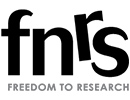The brain as a Darwinian compound of competing mechanisms
26.03.2018My first publication related to the brain was an elaboration on Hayek’s Sensory Order in 1992. In this paper, I argued that Hayek’s argument closely resembles Edelman’s Neuronal Darwinism. If one can believe Wikipedia (entry: “Neural Darwinism”), I was the first economist who noticed this. Yet, Edelman himself recognized Hayek’s early contribution (there is a collection of citations on the web, see: http://hayekcenter.org/friedrichhayek/qs-neuro.html). Thus, I conclude that the first neuroeconomist was Hayek. Alas, this is not acknowledged in neuroeconomics, I think few practicing neuroeconomists know the ‘Sensory Order’ or would appreciate it. Referring to Edelman possibly may not increase their interest, because Edelman’s theory is very controversial in the neurosciences. Envisaging the brain as an evolutionary system is mostly done on a philosophical level, by both philosophers (such as Daniel Dennett) and neuroscientists (for instance, William Calvin). If one aims are empirical support, things get very messy when trying to project the evolutionary logic on neuronal systems, such as identifying the replicators.
However, I think that the evolutionary perspective motivates very important questions when thinking about mechanisms. The simple point is that most neuroscientific and neuroeconomic models are deterministic in the more abstract sense that they aim at identifying one single causal chain that connects inputs (such as sensory data) and outputs (such as behaviour). There is a stochastic dimension, but this does not achieve the status of an evolutionary mechanism on its own, i.e. they just approach stochastics in terms of random errors (as in Glimcher’s reception of random utility models in economics). Evolutionary models also recognize single chains of action in finally determining behaviour, but they embed these in the larger context of structured selection among competing alternative pathways of causation.
I was intrigued by the fact that very recent papers in the dual systems tradition start to think in this way. Hommel and Wiers (2017) go as far as discarding the dual systems view and suggest a unitary approach. What they present, is an evolutionary model, though with different terminologies. They think that an external stimulus activates various ‘event files’, which are stored alternative patterns of motor actions related to effects, and which compete for gaining the ‘pole position’ in controlling behaviour. This inspired my own recent work a lot. Just think of a simple example: There is an offer of sweets, but you want to diet. The offer would trigger many alternative potential action chains (‘event files’), such as varying between refusing the offer, eating only a little amount, or accepting while thinking of saving calories later the day. The idea is that our brain, based on personal experience, stores many of these alternative action patterns, and that selection operates via complex contextual factors, such as paying attention to who makes the offer, current mood, and so on.
In this approach, as has been also suggested by Dohami and Shaw (2015), long-term memory would obtain a central role. Instead of calculating pros and cons of actions in every single instance (what neuroeconomists normally assume), stimuli would trigger evolutionary races between ‘virtual’ action chains stored in our memory system which run a ‘winner takes all’ contest. If one considers the speed by which interactions between different brain areas happen, it is perfectly possible that this evolutionary system may be much more efficient than a system that explicitly computes alternative actions. In other words, the brain would be a complex system of ‘vicarious’ Darwinian selection of behaviour (which was suggested very early by Donald T Campbell).
I think that this might explain the functions of the default mode network that I discussed in the previous blog post. The brain continuously maintains a universe of alternative virtual worlds and correlated behaviours, which requires substantial energy even in states of rest, as far as explicit behaviour is concerned. External triggers start a selection process, and so one pattern is selected, with minimal additional energetic expenditure. The evolutionary advantage of such a seemingly wasteful system is evident: high speed of reaction, flexibility of responses, and creativity.
I think that this perspective radically changes our most fundamental ideas about how the brain works, and neuroeconomics would be well advised to recognize Hayek among its intellectual fathers.
Calvin, W. H. (1998), ‘Competing for Consciousness: A Darwinian Mechanism as an Appropriate Level of Explanation’, Journal of Consciousness Studies, 5(4), 389–404.
Dennett, Daniel C. (1995), Darwin’s Dangerous Idea: Evolution and the Meanings of Life, New York: Simon & Schuster.
Edelman, Gerald M. (1987), Neural Darwinism: The Theory of Neuronal Group Selection, New York: Basic Books.
Hayek, Friedrich August von (1952), The Sensory Order: An Inquiry into the Foundations of Theoretical Psychology, Chicago: University of Chicago Press.
Herrmann-Pillath, C. (1992), The Brain, Its Sensory Order and the Evolutionary Concept of Mind: On Hayek’s Contribution to Evolutionary Epistemology, Journal for Social and Biological Structures, 15(2), 145–187.
Hommel, Bernhard and Reinout W. Wiers (2017), Towards a Unitary Approach to Human Action Control, Trends in Cognitive Sciences 21, 12, 940–49.
Shohamy, Daphna and Nathaniel D Daw (2015), Integrating Memories to Guide Decisions, Current Opinion in Behavioral Sciences 5: 85–90.







